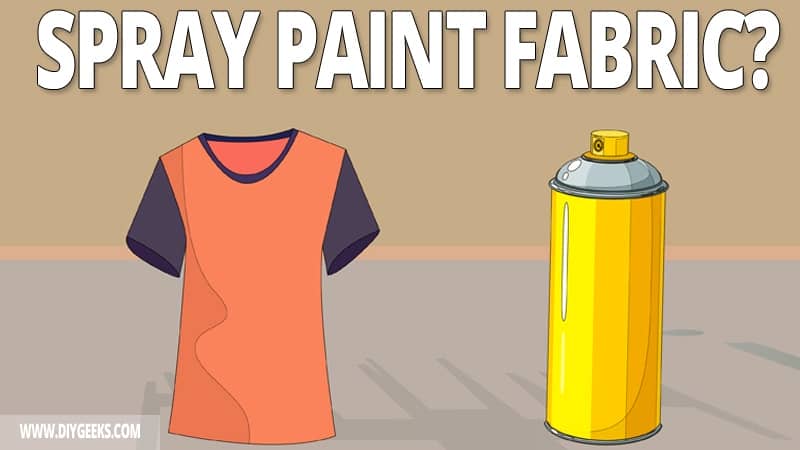You can spray paint fabric by using Fabric spray paint as they have a simple formula made of pigments, solvent, and acrylic polymer and won’t damage the cloth.
To spray paint fabric, wash the cloth, hang the cloth, put cardboard between each side, spray paint the fabric, and allow it to dry.
A spray paint finish on fabric lasts around 6- 36 months before it starts to fade.
Does Spray Paint Adhere to Fabric?
Spray paint does adhere to porous and absorbent fabric materials, such as cotton. But, doesn’t adhere to non-porous fabric materials, such as leather or polyester, as they don’t absorb it.
The spray paint will stick but will peel off within a few hours (or days) if applied on a non-porous fabric material.
Use fabric spray paint only, while regular spray paint will also stick, they can ruin the cloth. For instance, regular spray paint will ruin sensitive materials, such as wool.
Which Types of Spray Paint Can You Use on Fabric?
You can use fabric Spray paint on fabrics as they have a simple formula that doesn’t damage the material.
They are made of color (or pigments), solvent (usually water), and acrylic polymer. These compounds don’t etch or damage a fabric material and are safe to use.
You can use Krylon dye on fabric as it’s made of just colorants and produces a colorful finish. But, you must thin the dye as lightly as possible and use a spray gun to apply it.
How To Spray Paint Fabric?
To Spray paint fabric, do the following things.
- Wash the Cloth.
- Hang the Cloth.
- Put a Cardboard Between Each Side.
- Spray Paint the Fabric.
- Allow it To Dry.
The tools you need for this project are listed below.
- A cardboard
- Spray paint for fabric
- Detergent
- A bucket of water
- Pegs
- A hanger
1. Wash the Cloth
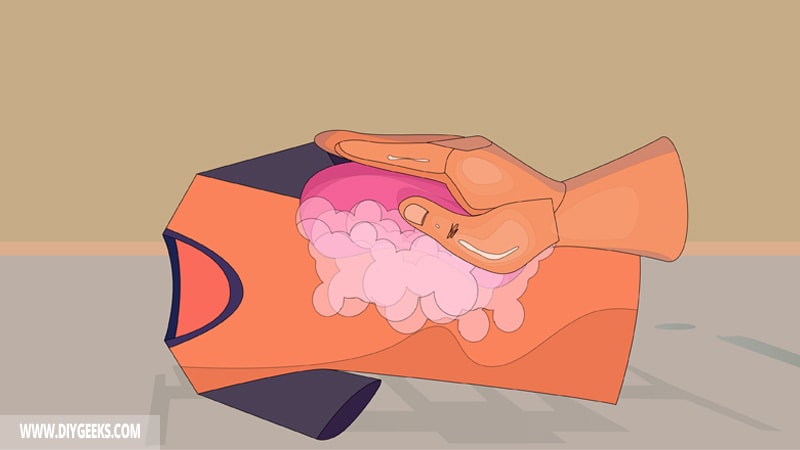
Wash the cloth in water and detergent to remove dirt, dust, or debris that can prevent proper paint penetration or adhesion.
Some cloth materials, such as cotton, need to be pre-washed before as they tend to shrink over time, which can prevent good paint adhesion.
2. Hang the Cloth
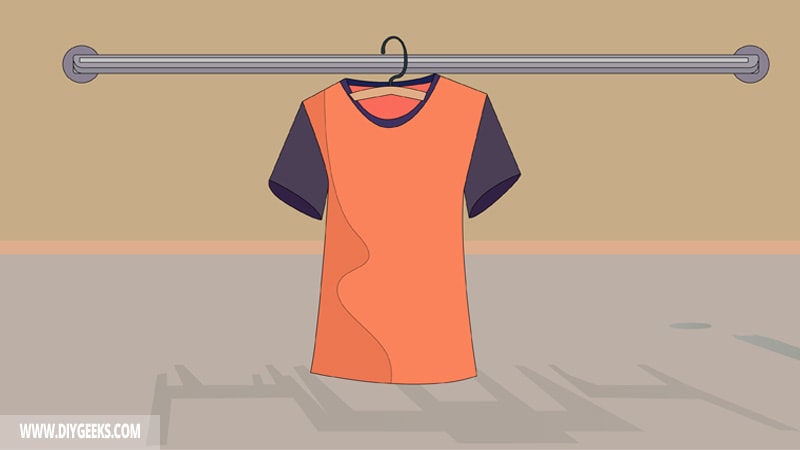
Hang the cloth using a hanger as it’s easier to spray it, gives you a better material view, and it’s easier to wipe the excess off. If it’s a large piece of fabric, flip it on a rope and hold it in place with pegs.
3. Put a Cardboard Between Each Side
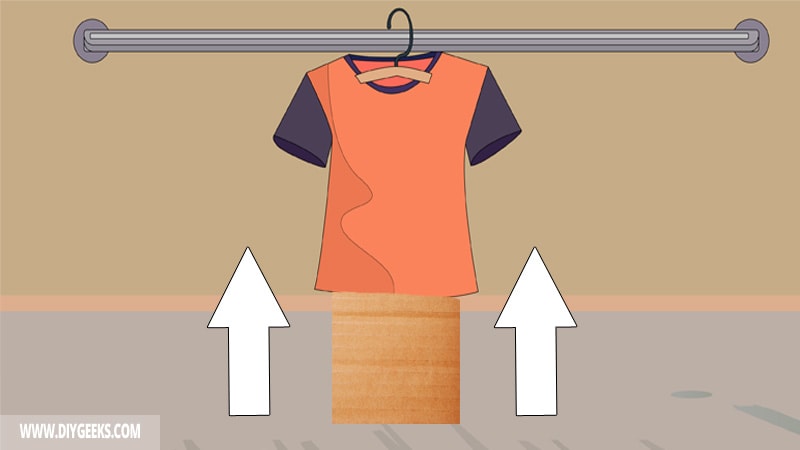
Put cardboard between both cloth sides to prevent over-spraying or spraying both sides.
For instance, you might want to spray the front of your shirt with a cream color and the back with a dark color. Without cardboard between both sides, you’ll spray the dark paint on the front and the back. The cream paint will also be sprayed on both sides.
The cardboard serves as a shield to keep the paint where it is supposed to be.
4. Spray Paint the Fabric
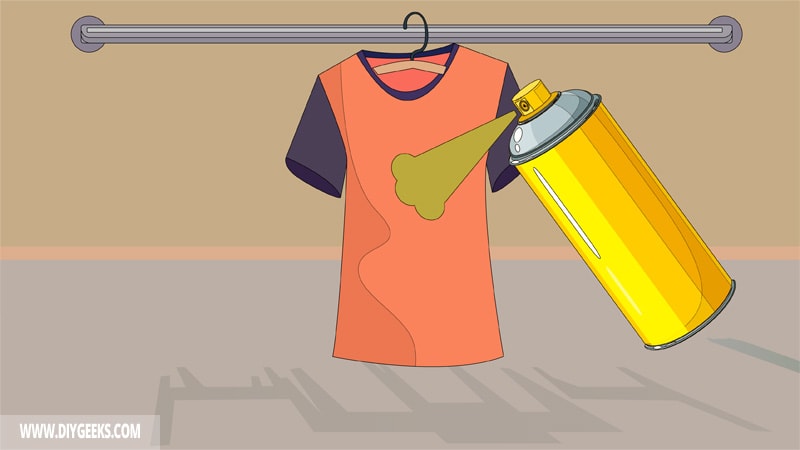
Apply three (3) spray paint coats over the fabric. Wait until one coat dries properly before applying the next one.
Ensure to mix the spray can by shaking it for 60 seconds before application, keep the arm back while spraying, and spray in sweep (or circular) motions.
Remember to use cardboard (or a shield) between both sides to prevent bleeding through.
5. Allow it To Dry
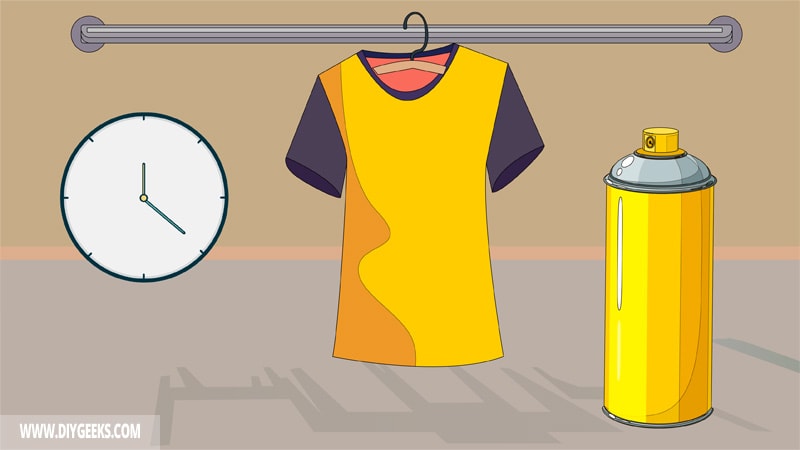
Allow the new spray paint finish to dry fully (cure) for around 12-72 hours before using, wearing, or washing the cloth.
Which Fabric Types Can You Spray Paint?

The types of fabric you can spray paint are listed below.
Cotton Fabric
You can spray paint cotton fabric as it is one of the most absorbent materials. But, it must be 100% cotton, if it isn’t spraying will be difficult as the other material won’t absorb the same as cotton.
So, one side of the cotton will absorb more paint, while the non-cotton material won’t; this leads to a blotchy finish.
Polyester
You can spray paint polyester fabric. But, only if you use spray paint that can stick to synthetic materials since polyester is not natural.
Polyester is made through a chemical reaction that produces a non-absorbent material. Since polyester is non-absorbent, oil-based spray paints wouldn’t stick to it. However, if the spray paint contains acrylic polymer, you can use it on polyester.
Linen
You can spray paint linen fabric as it’s a highly absorbent material. Also, since linen is a lightweight material, the coating will dry fast.
Wool
You can spray paint wool fabric since the material is made from a natural material and it’s absorbent.
However, ensure to check if the wool has already been dyed. If the wool has dye, it will be difficult to spray paint it. Also, the content of the spray paint can react harshly with the dye and damage the wool.
Denim
You can spray paint denim fabric because it’s an absorbent material. Also, it is strong and less likely to be damaged.
Leather
Most fabric spray paints will not stick to leather because leather is non-porous. As such, you’ll need a sprayer that sticks to synthetic materials. There are also leather-spray paints that you can purchase.
How Long Does Fabric Spray Paint Last?
Fabric spray paint will last between 6- 36 months (3 years) before it starts to fade. The finish will fade every time you wash the fabric (just a bit) and every time it’s exposed to weather elements (sun, rain), sweet, and possible water spills.
You’ll know when the color is starting to fade off the cloth when it has a lighter shade. For instance, if you sprayed a blue color on the cloth, it would begin to turn sky or light blue.
Also, you’ll start to notice the color coming off while you are washing the cloth. If you check the water left after washing it, the water will have the color of the cloth.
Regardless of what most manufacturers will tell you, fabric spray paints are not permanent, but fabric dye can be. On materials like wool, a dye can last forever.
Can You Wash Fabric That You Spray Painted?
You can wash the fabric that you spray painted after its finish is fully dry (cured). This takes between 24 hours to 5 days.
Most manufacturers advise not using the cloth for 3 days before you even wear it which means a longer time before you can wash it.
[sc name=”spray-paint-fabric”][/sc]
